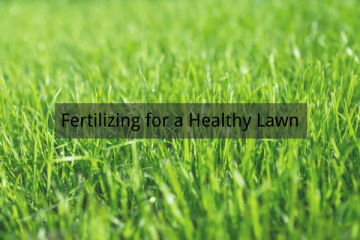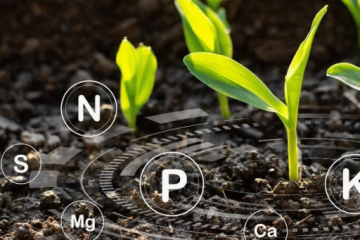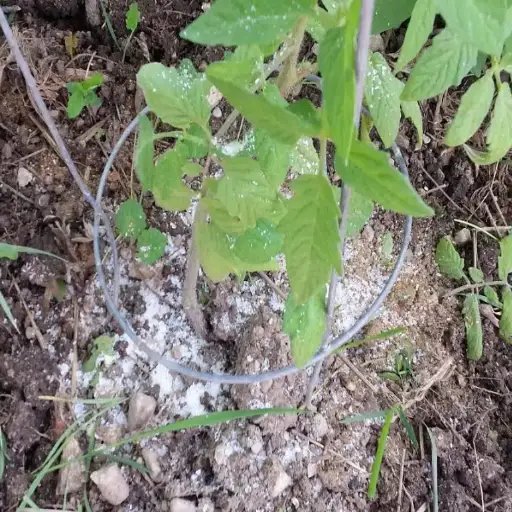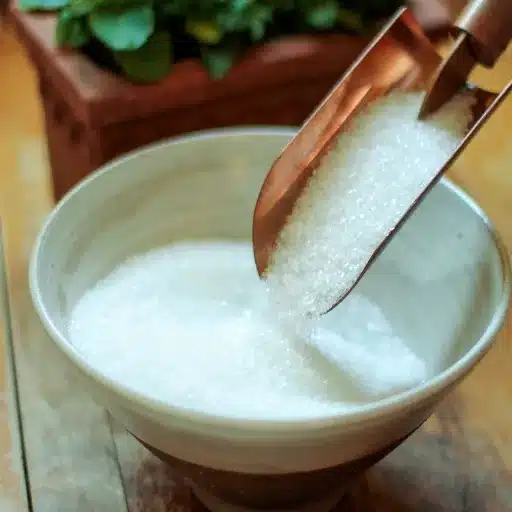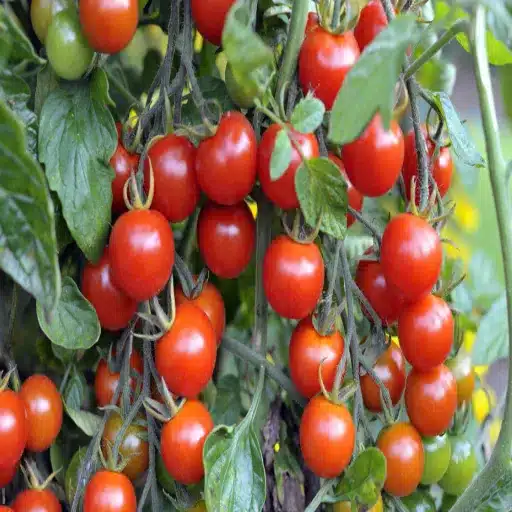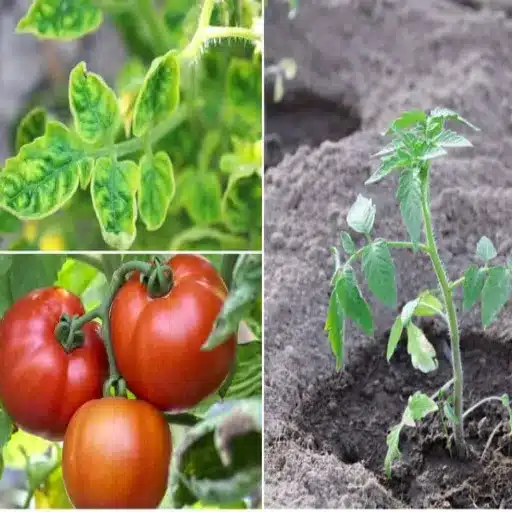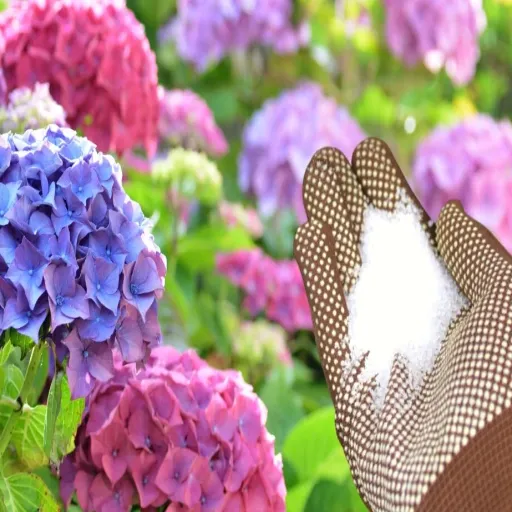Plants, like all living organisms, need the right balance of nutrients to thrive and reach their full potential. Epsom salt, a naturally occurring compound of magnesium and sulfate, has become an increasingly popular tool for gardeners looking to enhance plant growth and vitality. But how exactly does this simple substance benefit your plants? In this article, we will explore the unique properties of Epsom salt, why it’s considered a gardener’s secret weapon, and how it can boost everything from root development to vibrant blooms. Whether you’re a seasoned horticulturist or an enthusiastic beginner, understanding the science behind Epsom salt can transform the way you nurture your garden.
How Does Epsom Salt Benefit Plant Growth?
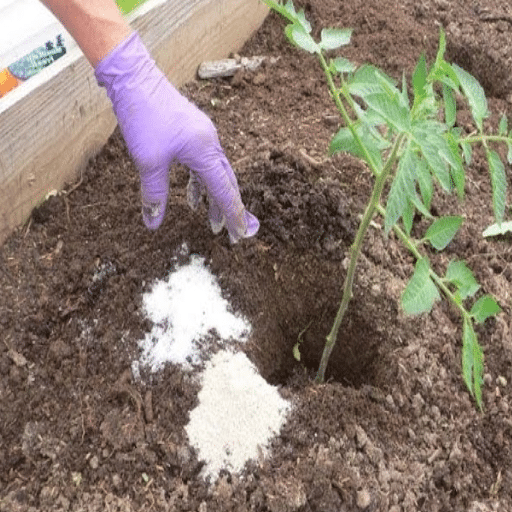
Understanding Magnesium Sulfate and Its Role
Epsom salt is made of magnesium sulfate, which contains two elements vital to plant development, magnesium (Mg) and sulfur (S). Magnesium is a key component of chlorophyll, which allows plants to capture light energy through photosynthesis. If there is an insufficient supply of magnesium, plants often display yellowing of leaves (chlorosis) due to insufficient chlorophyll production. This is likely to greatly limit the efficiency of photosynthesis and the amount of energy produced.
On the contrary, sulfur is essential for the formation of amino acids, proteins, and some enzymes which are important for the metabolism of a plant. Furthermore, it contributes to improving nitrogen absorption. Magnesium and sulfur together serve to improve many physiological functions, such as the formation of vigorous green leaves and strong roots. Epsom salt contains these nutrients in water-soluble forms, providing them directly to the plants, thus solving deficiency problems and hindering growth outcomes.
If used properly, Epsom salt can promote healthier leaves, stronger stems, better nutrient uptake, and even enhanced flowering and fruiting for various plant species. Decisions on application rates and frequency, however, should be based on comprehensive soil testing data, otherwise, the over-application can interrupt soil chemistry balance, which will be detrimental to plant health. Careful understanding of the chemical working of epsom salts and the parent plants’ responses will enable one to work with these solutions more successfully.
Why Add Epsom Salt to Your Garden?
Plant development and growth towards critical stages are supported by taking in nutrients from outside the body. Magnesium sulfate, commonly sold as Epsom salt, contains fine crystals that can be easily dissolved in water. The key factor in any plant’s nutrition is magnesium, as it is pivotal in chlorophyll formation, which leads to photosynthesis and therefore the growth of the plant. Moreover, chemical synthesis within the plants also requires some compounds, and therefore, sulfate is essential.
Chlorosis and stunted growth are some indicators of magnesium-deficient soil, which can also be checked through soil testing. Magnesium episodes are known to appear as terminal plant shoots, which are also known as leaves do not fully unfurl. Furthermore, Epsom salt offers a solution for its magnesium-deficient soil and ensures crops absorb its nutrients, which leads to healthier and sturdier plant systems. Epsom salt is also recommended for crops as well as flowers, such as peppers, tomatoes, and even roses, due to them having higher demand for magnesium.
Epsom salt may improve plant stress tolerance by aiding in dealing with environmental hardships such as drought, excessive heat, or extreme cold. Nonetheless, constant application of Epsom salt without confirming a magnesium soil deficiency may cause unnecessary buildup of magnesium in the soil, which could leach into groundwater or create nutrient imbalances. Epsom salt can be most effective when used in conjunction with precise dosage recommendations tailored specifically to the gardeners’ horticultural needs.
Enhancing Nutrient Uptake with Epsom Salt
Epsom salt, or magnesium sulfate, is especially important for aiding the absorption of nutrients in plants. Magnesium is vital for photosynthesis as it is part of chlorophyll, and the plant relies on photosynthesis to convert light energy to chemical energy. Mg also helps with enzymatic activities that control the absorption of other vital nutrients, including but not limited to: nitrogen and phosphorus, thereby aiding in metabolism and growth.
Plants suffering from inadequate Mg supply in soil tend to display a root absorption bottleneck. Applying Epsom salt as a foliar spray helps bypass these blockages as it provides tissues with magnesium quicker than root absorption. A 1-2% solution is optimal for most crops. As for soil application, it provides accessibility for nutrients over a longer duration of time, but must be carefully controlled to avoid depleting calcium and potassium and rendering magnesium-dominating conditions.
Soil and tissue culture probing provide accurate information on existing nutrient deficits, which guarantees that delineating measures taken are constructive rather than misguided. Such an organized technique, in addition to avoiding excessive application, also encourages sustainable agriculture whereby crop production is increased devoid of undermining ecological balance. Moreover, the development of new digital soil monitoring technologies facilitates instant diagnosis, which enables more accurate magnesium supplementation based on the crop and soil type used.
Can Epsom Salt Help with Blossom End Rot?
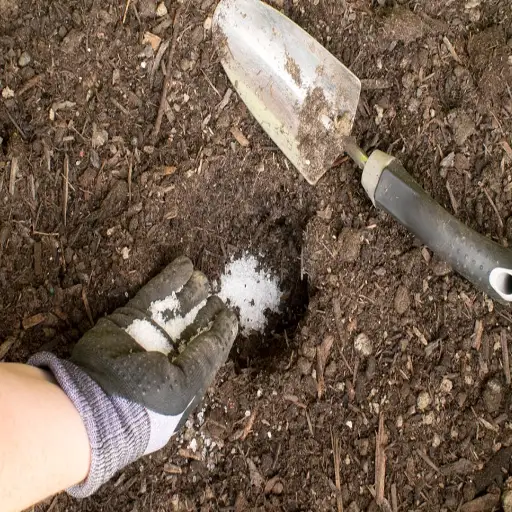
Addressing Calcium Deficiency with Magnesium Sulphate
Chalazion, or the rot at the blossom tips of tomatoes and peppers, occurs when there is a spatial deficiency of calcium within the developing fruit. This is not because there is no calcium within the soil, but because of how calcium travels within the plant. Epsom salt, which is magnesium sulfate, does not directly resolve calcium issues on its own because it does not provide any calcium.
Magnesium serves as an important secondary nutrient that enhances chlorophyll activity and photosynthesis, which is critical for the health of a plant and its nutrient intake. Calcium uptake and transport may also be affected because of the increased nutrient flow. However, the application of magnesium sulfate has to be done with extreme caution because too much can significantly interfere with calcium ions, worsening the deficit if applied indiscriminately.
When it comes to resolving the issue of blossom end rot, targeted calcium supplementation, such as with calcium nitrate sprays, remains the most effective action to take. A consistent level of soil moisture, along with alleviating the pH inconsistency issues, is important to ensure calcium bioavailability is maximized. The use of magnesium sulfate as a secondary amendment should be restricted to soils showing signs of magnesium deficiency to ensure nutrient balance that does not worsen the condition.
Preventing Blossom End Rot in Tomatoes and Peppers
Blossom end rot (BER) in tomato and pepper fruits can be effectively managed using a combination of practices related to soil preparation, irrigation, and nutrient application. Constant moisture in the soil is crucial for calcium uptake. This is because varying irrigation schedules cause plant stress, which hinders nutrient movement as well as plant circulation. Supplied water should be applied to the plant’s root zone without oversaturating the soil, hence, drip irrigation is preferred.
Keeping an eye on the soil composition and correcting it as needed ensures that the nutrient balance is right. To achieve this, perform regular soil tests to monitor the amount of calcium and other nutrients available, including the pH, which should not go below 6.2 or above 6.5. When imbalances are encountered, gypsum calcium additives or calcium chloride can be used. Unlike other fertilizers, nitrogen should not be used in excess as this encourages rapid vegetative growth rather than downgrading fruit production, which elevates the risk of BER.
Amending the soil with organic materials, such as compost or well-aged manure, increases soil and microbial health, which improves calcium bioavailability. Aided by ample irrigation, nutrient-rich waters, and favorable growing conditions, blossom end rot can be reduced substantially, which results in healthier plants and high-quality fruits.
How to Use Epsom Salt for Peppers and Tomatoes?
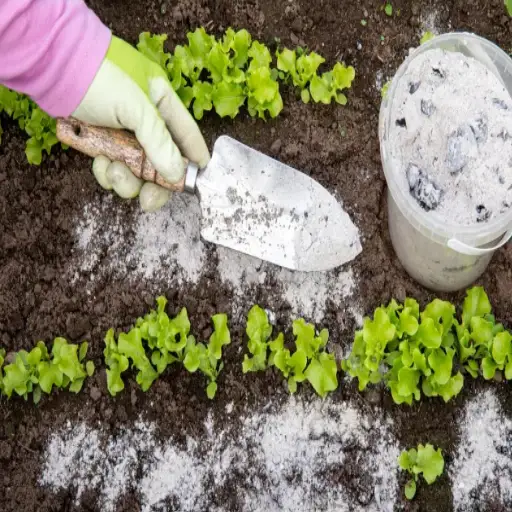
Proper Dosage: Epsom Salt Per Gallon of Water
When using Epsom salt on tomatoes and peppers, it is important to measure the dosage carefully as to not negatively impact the plants. The suggested amount is 1 to 2 tablespoons of Epsom salt per gallon of water. This ratio provides an adequate amount of magnesium sulfate that helps aid the production of chlorophyll, nutrient absorption, and decreasing the chances of a magnesium deficiency. You should dissolve the Epsom salt completely in water so that it can be applied evenly to the plants.
Best results will be obtained if the solution is applied either through foliar spray or by drenching the soil. With foliar spray, make sure that the tops and especially the undersides of the leaves are well-coated, as that is where the most nutrient absorption occurs. Apply in the late afternoon or early morning to avoid evaporation or exposing leaves to the sun, which causes burning. When drenched, pour the soil solution evenly around the base of the plant and ensure that all the treated plants remain consistent.
Monitoring plant response with Epsom salt is very crucial. An overapplication can lead to a magnesium surplus in the soil, which can severely limit calcium intake. Calcium is needed to prevent blossom end rot and many other conditions. Epsom salt should only be used once a specific deficiency is found through soil testing; otherwise, the allotment and frequency will lead to problems.
Application Techniques: Adding Epsom Salt to the Soil
When applying Epsom salt to the soil, care should be taken when it comes to the application rate so that the Epsom salt does not counteract intended mulching effects when selectively inserting nutrients. As a rule of thumb, it’s best to start with 1-2 tablespoons of Epsom salt for every gallon of water and pour it at the base of the plants instead of on top to avoid hindering the plant’s Epsom salt uptake. In this manner, the salt can be optimally received without materially changing the pH of the soil.
Epsom salt can be used as a single-step dry multi-purpose fertilizer by sprinkling it around the plant in a controlled manner. Just make sure to cap the amount so that an even layer containing 1 tablespoon is administered per 1 square foot of the soil. To achieve the best results, plants must be watered thoroughly as this will aid with salt disintegration.
To achieve maximized results, it is wise to test the soil for nutrient concentrations before the application. A soil test helps determine magnesium deficiency and can help calculate the dosage of Epsom salt needed. Continuous reapplication should be done only if the deficiency lingers or if there are visible indications from the plants, like leaf yellowing due to lack of chlorophyll synthesis, which signals nutrient imbalance.
Ongoing soil assessment ensures that Epsom salts are adding value without toppling the intricately calibrated fertilizer equilibrium. Proper procedures and boundless support from soil tests guarantee that the Epsom Salt does not impede the balance of plant nutrients.
Does Epsom Salt Affect Soil pH?
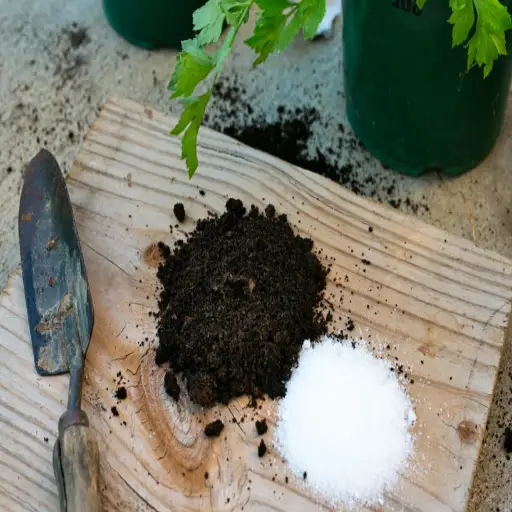
Conducting a Soil Test for pH Levels
Measuring soil pH levels accurately requires a professional soil test. Start by taking soil samples from different places within the area of interest to guarantee results are representative. From a soil probe or a spade, collect samples from 6-8 inch depths as this is the root zone of most plants. Combine thoroughly in a clean container to form a composite sample.
The best way to measure pH accurately is in a lab. Using a lab, you will be able to gather in-depth records regarding the soils acidity or alkalinity. Faster assessments can be done using home testing kits. These kits normally contain color changing reagents to determine pH which may not be as exact as lab results.
Nutrient accessibility and biological activities in soil are greatly impacted by soil pH. The most desirable pH for mineral absorption by plants is 6.0 to 7.5. Straying from this range may present the need to take additional measures, like applying lime to acidic soils or sulfur compounds for alkaline soils. Regular tests, performed every 2-3 years, should be done if optimal growing conditions are preferred and soil management settings require adjustments.
The Impact of Epsom Salt on Garden Soil pH
Epsom salt is more popularly known as magnesium sulfate (MgSO₄), is frequently used in gardening for its ostensible usefulness in encouraging the growth and development of plants. The disadvantages of Epsom salt have only a slight effect on soil pH levels. A neutral compound, magnesium sulfate, does not appreciably affect the acidity or alkalinity of garden soil when applied in recommended amounts, like most gardening supplies. Its indirect impact on soil chemistry does alter nutrient accessibility, however.
Soil structure can be altered with additional magnesium due to greater nitrogen, phosphorus, and sulfur uptake, which assists in soil and plant health indirectly. On the other hand, excessive dosage of Epsom salt can worsen nutrient imbalances by increasing magnesium concentration more than necessary. Because of this, calcium uptake may be interfered with, thus leading to an altered pH over time. Moreover, long-term overuse runs the risk of salt accumulation, leading to adverse soil conditions, thus hindering plant root growth.
Before application, a soil test is recommended to avoid the alteration of these outcomes. Custom amendments can then be developed based on the conditions uncovered with the test.
When is the Best Time to Use Epsom Salt in Your Garden?
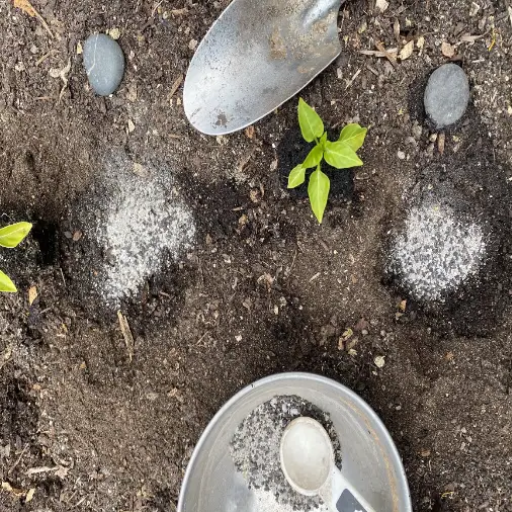
Maximizing Benefits During the Growing Season
Maximizing the effectiveness of Epsom salt care practices during the growing season requires careful timing and application methods. Epsom salt, which primarily contains magnesium sulfate, is most useful when applied during specific developmental milestones of the plant. For example, during the early vegetative stage, magnesium assists in chlorophyll production, which catalyzes the photosynthesis process, leading to vigorous leaf growth. Likewise, during later stages of the flowering and fruiting processes, the sulfate component supports the protein and enzyme activity refining processes, ensuring healthier blooms and abundant yield.
Most application methods differ according to plant and soil type. One of the most common techniques is to dissolve one to two tablespoons of Epsom salt in a gallon of water for use as a foliar spray. Shredded plant tissue, which is already infused with the plant tissue rich in chlorophyll, provides nutrients directly to the parts that require it and is rapidly absorbed due to capillary action. This is especially beneficial for species of plants with low concentrations of magnesium, such as tomatoes, peppers, and roses. For other types of soil, applying measures, placing Epsom salt within two to three inches of the soil’s upper layer near the plant’s stem improves nutrient supply over extended durations.
To evaluate results, it is important to track symptoms like yellowing of the leaves (chlorosis) or low fruit yield. Such symptoms can be managed through regular applications during the growing season. However, Epsom salt should not be overused, as high levels of magnesium could negatively impact the soil’s balance, especially affecting the uptake of calcium and potassium. Regular soil and leaf tissue tests during the growing season offer the data necessary for precision application approaches that maximize benefits while minimizing soil disturbances.
Signs that Soil is Deficient in Magnesium
Signs of magnesium deficiency can be found on plants and need to be addressed immediately so that the health as well as the productivity of the crops does not suffer. Magnesium deficiency usually shows as interveinal chlorosis, where leaves turn yellow in the space between veins, but the veins themselves are still green. This is most noticeable on older leaves, which get magnesium drawn out of them. Since magnesium is a mobile nutrient, it gets exhausted and starts being redirected to aid fresh new growth.
Another symptom is stunted growth of the crops, which is also an indicator, as magnesium is vital for the process of photosynthesis. Magnesium, being one of the core elements of chlorophyll, makes sure that photosynthesis happens efficiently. Without sufficient magnesium, crops will not be capable of harnessing enough sunlight for energy, leading to an energy shortage. Additionally, there might be curling of leaves on the tips combined with premature leaf drop, which further signals the importance of magnesium.
Diagnosing magnesium deficiency with the needed accuracy is only possible with the help of agronomic evaluations like soil analysis, steroids, as well as measuring the magnesium levels. Depending on the type of crop and the soil texture optimum level of magnesium varies, but the average falls between 50 to 100 ppm. To increase the yield, regular tests help enable timely and targeted amendments using dolimitic lime and magnesium sulfate to restore the nutrient balance.
Seasonal Tips for Gardening with Epsom Salt
Gardeners often supplement their plants using Epsom salt, which contains magnesium sulfate, to boost their health throughout the season. Using Epsom salt during spring helps aid seed germination with the roots forming because magnesium facilitates energy metabolism, chlorophyll production, essential for growth and development, and sustains life in the seed. To achieve the best results, for a gallon of water, dissolve a tablespoon of Epsom salt and apply directly to the soil or use as a foliar spray.
Additionally, during summer growing seasons, frequently yielding plants, such as tomatoes, roses, and peppers, require an extra aid of magnesium which helps stave off underlying problems like stunted flowering and yellowing leaves. Sufficient nutrient levels can be retained with mid season applications repeatable every four to six weeks. Special care must be undertaken to avoid soil imbalance due to over-application.
Carefully integrating Epsom salts while preparing the soil during fall helps leave traces of magnesium which aid boosting the next planting cycle. Pouring a couple of tablespoons while working into the top soil enhances magnesium levels and aids overwintering plants together with spring bulbs.
Even though Epsom salt is widely utilized, it should never take the place of complete soil tests and proper soil grading methods. Optimal application depends on having a well-defined knowledge of the crop requirements, existing soil conditions as well as soil structure, and water supply to stave off wastage or accrual of unnecessary nutrients over time.
References
Frequently Asked Questions (FAQs)
Q: What are the benefits of using Epsom salt for plants?
A: Epsom salt can be beneficial for plants as it provides magnesium and sulfur, which are important nutrients for plant growth. These elements help improve the soil’s pH, enhance photosynthesis, and promote the overall health of garden plants.
Q: How does Epsom salt affect tomato plants?
A: Epsom salt acts as a supplement for tomato plants by providing magnesium, an essential nutrient that helps prevent blossom end rot and promotes the production of chlorophyll, which can lead to healthier and more productive plants.
Q: How should I apply Epsom salt to my garden plants?
A: You can add one tablespoon of Epsom salt to a gallon of water and use this Epsom salt solution to water your plants. Alternatively, you can put a handful of Epsom salts in the hole before planting to meet the specific needs of your plants.
Q: Can Epsom salt be added to the soil for all types of plants?
A: While Epsom salt can provide benefits to many plants, it is important to consider the specific needs of your plants. Some plants may not require additional magnesium or sulfur, so it’s best to research individual plant needs before application.
Q: How often should I use Epsom salt in my garden?
A: It’s generally recommended to apply Epsom salt to plants once a month during the growing season. However, the frequency can vary depending on the plant’s needs and soil conditions.
Q: What is the recommended amount of Epsom salt to use for plants?
A: For most plants, you can add one tablespoon of Epsom salt per gallon of water or mix one cup of Epsom salt into the soil for every 100 square feet of planting area.
Q: Does the use of Epsom salt affect the soil’s pH levels?
A: Epsom salt can help to slightly improve the soil’s pH by providing magnesium. However, if your soil has a significant pH imbalance, you may also need to add builders’ lime or other amendments to achieve the desired pH level.
Q: Can Epsom salt be used with other fertilizers?
A: Yes, Epsom salt can be used alongside other fertilizers. It complements them by providing magnesium and sulfur that might not be present in sufficient quantities in regular fertilizers.
Q: Is it safe to use Epsom salt for all garden plants?
A: While Epsom salt is generally safe for most garden plants when used correctly, it’s important to avoid overuse, as excessive magnesium can interfere with the uptake of other vital nutrients like calcium in the soil.
Q: How should Epsom salt be applied when using a hose to water plants?
A: You can dissolve Epsom salt into the water by adding the recommended amount to a hose-end sprayer. This method ensures an even distribution of the Epsom salt solution when watering your plants this summer.

